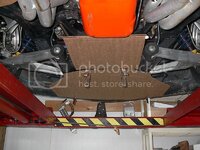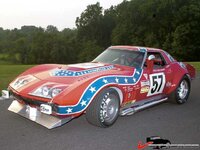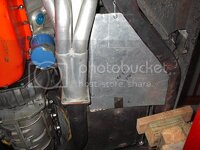69427
The Artist formerly known as Turbo84
Had a few moments to kill this afternoon and kicked around some possible aero mods for the '69. Every time I'm under the car doing stuff I'm amazed at how "rough" the underside of these things are. I know a lot of guys complain about the frontend lift (at speed) of C3s, and although I've never had much complaint about the high speed manners of my car, I thought it might be amusing to see if I can still improve the car's manners a bit. I have no illusions that I could actually create downforce with "tack on" mods, but if I can reduce the lift force a touch, it might be worth the effort (and the few pounds of sheet aluminum). Here's some rough cardboard templates of the shapes from the spoiler back to the oilpan (the width was limited by the size of the cardboard):

And under the drivers floor area.

There's a bunch of detail stuff I was also pondering, such as endfences and vanes to try to contain or direct the air. I'm just thinking about possible stuff for the front half of the undercar, as I don't think it's possible to clean up the front enough to keep the back half from turning turbulent anyway.

And under the drivers floor area.

There's a bunch of detail stuff I was also pondering, such as endfences and vanes to try to contain or direct the air. I'm just thinking about possible stuff for the front half of the undercar, as I don't think it's possible to clean up the front enough to keep the back half from turning turbulent anyway.




